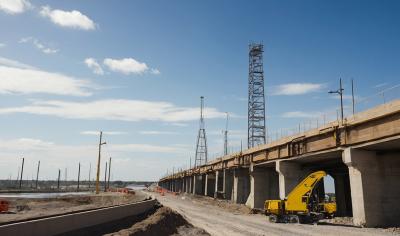
Navigating Infrastructure Project Viability: The Crucial Role of Financial Modeling
In the vast and intricate landscape of infrastructure development, the compass guiding project success is financial viability. Within the complexities of construction costs, financing intricacies, and revenue projections, financial modeling emerges as the crucial force, providing stakeholders with a clear path.
Understanding the Financial Landscape:
A comprehensive examination of construction costs, factoring in materials, labor, and unforeseen expenses, is paramount. Simultaneously, a meticulous exploration of financing structures ensures alignment with long-term project goals. This deep understanding equips stakeholders to anticipate financial challenges and strategically plan for success.
At the core of financial modeling lies the ability to predict future cash flows and financial performance. This predictive analysis proves invaluable for assessing profitability, identifying potential bottlenecks, and realistically evaluating returns on investment. By projecting revenues and expenses over the project's lifecycle, stakeholders gain foresight into challenges, allowing for optimized financial strategies.

Proactive Risk Mitigation:
Inherent to infrastructure projects are various risks, from economic fluctuations to unforeseen delays. Financial modeling becomes a tool for simulating scenarios, evaluating the project's resilience against uncertainties, and developing proactive risk mitigation strategies. Stress-testing the financial model under various conditions allows stakeholders to identify and quantify risks early in the planning stages, enabling strategic measures to minimize potential negative impacts.
Financial models empower stakeholders to make well-informed decisions throughout the project's lifecycle. Whether adjusting timelines, optimizing expenses, or choosing financing options, insights from financial modeling form a solid foundation for decision-making aligned with the project's financial objectives. This integration of financial models into the decision-making process ensures a proactive and adaptive approach to project management, maintaining the financial course amid changing circumstances.
Clear and transparent financial models foster effective communication among project stakeholders. From investors to government agencies, a shared understanding of the project's financial dynamics encourages collaboration and builds confidence in its viability. This alignment is an ongoing process throughout the project lifecycle, creating a collaborative environment where stakeholders collectively work towards the project's financial success.
In the intricate landscape of infrastructure project development, financial modeling emerges as the compass that navigates the journey toward viability. By providing a detailed analysis of financial performance, it empowers stakeholders to make informed decisions, manage risks, and align efforts towards the successful realization of a project. As infrastructure plays a pivotal role in shaping the future, the role of financial modeling becomes increasingly crucial in ensuring these projects withstand the test of time and economic tides.


